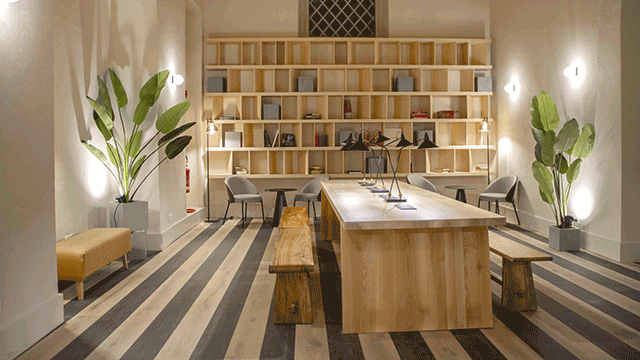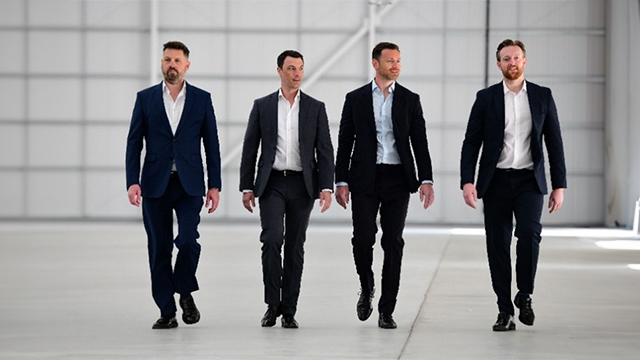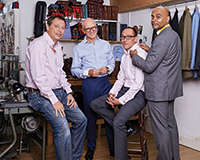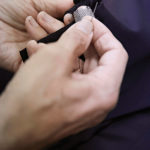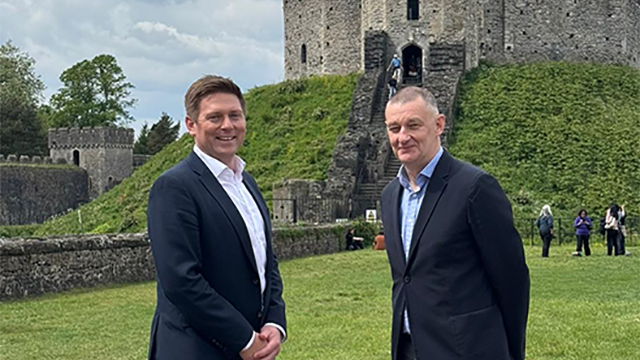Estates Gazette editor Damian Wild joins two contrasting followers of fashion and learns how what you wear conveys so much about you and your business
This may be a shot in the dark, but my guess is that the average surveyor’s wardrobe may not be entirely on-trend this autumn. Vogue Paris tells us that 70s accents, super-long sleeves and puffa jackets are what we should be wearing, in red and with bondage detail. With a handful of honourable exceptions, in a male-dominated industry (see page 5) for yet another season it will be dark suits, ill-fitting shirts and Hermès ties that will feature on the property catwalks of Mayfair, the City and Spinningfields.
That’s not to say subtle changes are beyond us. Over the past decade or so ties (even Hermès ones) have spent more time in the owner’s top drawer than round his neck. The white shirt has ceded ground to pinks and blues. And dress-down Fridays, ushered in by the dotcom bubble, have lasted longer than many of those first-generation tech businesses themselves.
So what’s next in office attire and how does it reflect the changing nature of property?
Roberto Revilla is a tailor whose number is kept on speed dial by many of those who prowl the boardrooms at the top of professional services sector. Gary Murphy heads Allsop’s residential department and is a man who pays close attention to what he is wearing. Joe Borrett takes a more relaxed approach to his wardrobe, adopting a style that would look out of place in Murphy’s auction room but is well suited to Google, where he is head of property for EMEA. Both agreed to have a bespoke shirt designed by Revilla and I wasn’t about to miss the opportunity either.
It’s a rainy Monday morning in London when we meet to be measured. Murphy arrives in galoshes. With his leather shoes used to spending their evenings in cedarwood shoe trees, he isn’t about to ruin them in puddles. “I’m a bit OCD,” he confesses. “I like to enjoy my clothes.”
Borrett arrives moments later wearing trainers, his striped Ralph Lauren shirt hanging out of his jeans. “I last wore a suit six months ago when I met the King of Spain,” he says.
In style terms I sit somewhere between the two. Revilla – quickly, politely – nails my stereotype: “I meet a lot of gentlemen who know how to wear a suit and tie and can dress down. But they struggle in between.”
Revilla gets to work. He measures each of us: waist, chest, arms and adds a “nice bit of drama” with a tailor’s spirit level to measure our shoulder incline. “I love all this stuff,” says Murphy. We flick through swatch books, discuss colours and cuffs and pick patterns. Revilla guides but never leads: “If you’re drawn to something on a swatch, put it on your shortlist. If not, you’ll pass over it in your wardrobe.”
Murphy says he could talk about suits for hours. As he flicks through the swatch books he namechecks those whose style he admires. “The Prince of Wales is one of the best dressed men in the world,” he says. At least two Bonds (Connery and Craig) have influenced wardrobe choices.
Borrett is trying to avoid options he considers safe. He considers checks and weighs up options – punchy versus subtle. He doesn’t want to see anyone wearing the same shirt at a party.
I pick a subtle pink check; by a distance the most conservative of the three choices.
Six weeks later we are in Revilla’s workroom; a busy, buzzy, hot basement in the West End.
There is something exhilarating about pulling on a bespoke shirt for the first time. The shoulders are in the same place as your own shoulders. Until my fitting I had no idea mine were so lopsided. Since Revilla diagnosed me I have become slightly preoccupied by the news. My new shirt helps me move on.
Borrett and Murphy are delighted too. Murphy relishes his gauntlet cuffs; Borrett says later that his wife now wants her initials sewn into her collars too.
It’s a fun, indulgent experience. But there is a seriousness too. In an industry where first impressions and appearance count, paying attention to dress matters. A tailor isn’t about to put anyone in property in a puffa jacket or add bondage accents to an outfit (unless that’s what you’re after) but Revilla and his peers can save you from yourself. He has moved some of the industry’s better known names out of double-breasted suits into single-breasted, for instance. Fashion will evolve as the economy shifts, he says.
As we smile for the camera I suspect Borrett is as likely to give up his weekend Crocs as I am to grow comfortable with smart-casual anytime soon. Yet I suspect we’ll both be thinking more about how what we wear conveys what we’re about. Murphy, I suspect, may have found himself another new tailor.





